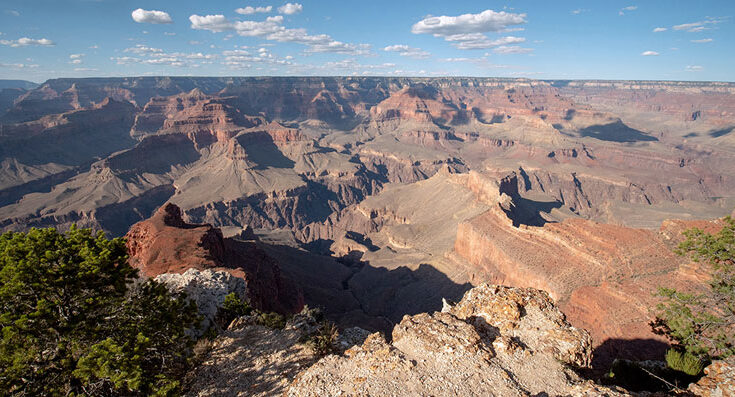By Grace Berry and Isabella Gomez/Cronkite News
WASHINGTON D.C. – A former superintendent at Grand Canyon National Park warned Monday that if the park stays open during a government shutdown, understaffing could put “nationally important, irreplaceable resources” at risk.
Robert Arnberger is one of 40 former national park superintendents who have urged Interior Secretary Doug Burgum to close national parks rather than keep them open with skeletal staffing.
“When you don’t have the staff on the ground, you cannot protect visitors, you cannot protect the resources, and you cannot protect the employees who are still required to work,” Arnberger, a Tucson resident, said by phone.
The Park Service has lost a quarter of its personnel since President Donald Trump returned to office in January, according to the National Parks Conservation Association.
Short-staffing has already put a strain on fragile ecosystems, former park officials say. And if previous shutdowns are any guide, staffing would be cut even further until Congress and the White House reach a deal to fund the federal government fully.
That would leave the parks vulnerable, according to a letter that Arnberger and the other former park leaders sent to Burgum last week.
Grand Canyon National Park drew 4.9 million visitors last year, according to the park service.
Arnberger, who oversaw the park from 1994 to 2000, recalled the damage that occurred during shutdowns in 2013 and 2018.
“Trees were cut, litter was strewn all around the place, vandalism occurred,” he said.
The damage has been severe enough to require temporary closures – after the government reopens – to allow park personnel time to tidy up.
“We have documented factual examples of what happens when the national park personnel are reduced or cut back and unable to provide care,” Arnberger said.
The president met with the top leaders from each party in the House and Senate on Monday, with no resolution to the spending standoff. The federal government’s fiscal year ends on Sept. 30, so without a deal by the end of the day Tuesday, much of the government will cease operations.
Republicans have proposed extending current funding levels through Nov. 21 to give lawmakers more time to work out a longer deal. However, they lack sufficient votes in the Senate without Democratic support. Democrats have demanded a reversal of significant funding cuts for healthcare – and an ironclad assurance that Trump won’t be able to continue cutting programs and funding that Congress has authorized.
During a shutdown, services the administration deems nonessential are suspended.
Social Security benefits would still be paid, and mail would still be delivered. Military personnel, airport security personnel, air traffic controllers, immigration enforcement agents, and others would be required to continue working as usual. However, their paychecks would be delayed if Congress doesn’t reach a deal by the next payday.
Other federal workers face unpaid furloughs.
Arizona had nearly 64,000 federal employees as of March – before some of the Trump administration’s cuts kicked in – according to figures from the Economic Policy Institute. About one in four are veterans.
Congress typically authorizes back pay once a shutdown ends.
But Trump has threatened mass layoffs in the event of a shutdown. Those layoffs would be challenged in court, as previous firings have been, and the president has no special authority to terminate workers just because they’re on furlough.
The threat has left federal workers scared, said Mario Campos, national vice president of the American Federation of Government Employees District 12, which represents workers in Arizona, California, Nevada, and Hawaii.
“I believe the threat is valid and imminent, although maybe not lawful,” Campos said. “This administration has already proved that they’re not going to follow court orders or the regular norms of the government.”
Campos added that workers feel a sense of betrayal, having pledged to serve their country and defend the Constitution and “expecting our federal government to respect all the rules.”
Tourism is a significant industry in Arizona, and the Grand Canyon is a huge draw.
Visitors to national parks in Arizona spent $1.4 billion last year, according to a report released by the National Park Service on Monday ahead of a potential shutdown.
Grand Canyon visitors spent the bulk of their time there. The tourism revenue supports roughly 9,000 jobs.
Nationwide, national parks are huge economic engines.
According to the NPS report, visitors to national parks spent $29 billion in nearby communities – a vital source of revenue for hotels, restaurants, and other local services.
In March 2024, under the Biden administration, the Interior Department issued a plan calling for parks to be closed within a week of a government shutdown.
On Monday, the NPS said that the plan is under review and would not necessarily be followed.
The last government shutdown lasted 35 days in late 2018 and early 2019 – in the middle of Trump’s first term.
Parks stayed open at the president’s direction. But there were many problems, Arnberger recalled.
In California’s Joshua Tree National Park, trees that can live 500 years were cut down illegally. And officials found evidence of illegal off-road camping.
In Death Valley National Park, campgrounds remained open, but the bathrooms were unattended and closed, resulting in sanitation issues.
At Big Bend National Park in Texas, vandals carved names and dates into prehistoric petroglyphs.
In Zion National Park, visitors graffiti their social media tags on a rock located in Angels Landing.
“National parks don’t run themselves. It is hardworking National Park Service employees that keep them safe, clean, and accessible,” the superintendents’ letter reads.












